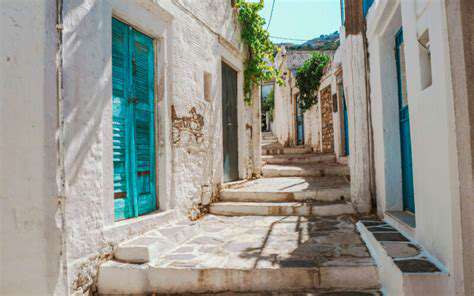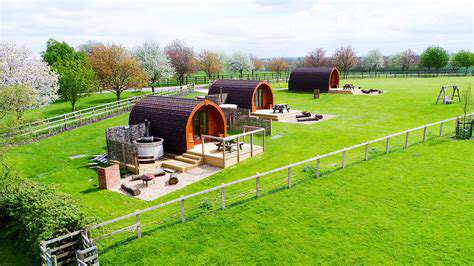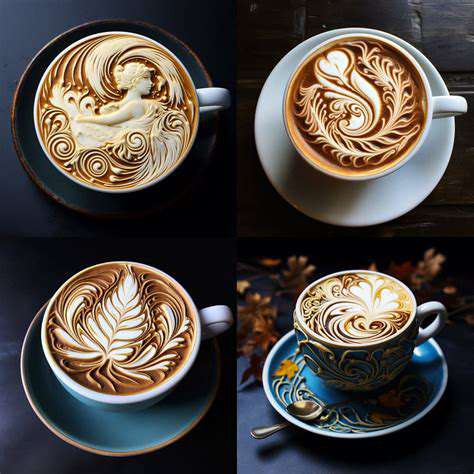The Ultimate Paris Travel Guide: Things to Do & See
Beyond the Monuments: Exploring Parisian Culture and Lifestyle
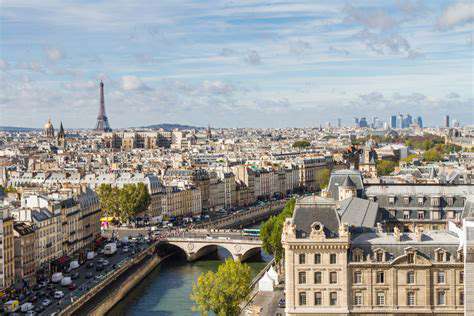
Unveiling the Everyday:
While grand monuments dominate postcards, the real Paris thrives in its everyday rhythms. Morning boulangerie queues, afternoon park picnics, and evening café terraces reveal more about local life than any guidebook. These unscripted moments form the city's living heritage, where baguettes crackle fresh from ovens and neighbors debate over espresso cups.
Notice how Parisians transform simple acts into rituals - the precise folding of a newspaper, the careful selection of cheeses, the artful arrangement of market purchases. Such details expose cultural values no museum can replicate. The true Paris reveals itself not in glass cases, but in sidewalk chalkboards advertising today's plat du jour.
The Impact of Environment:
Paris didn't simply occupy space - it evolved with the Seine's curves. The river dictated trade routes while surrounding forests supplied medieval timber. Even today, the city's layout whispers of ancient geography: hills that once hosted vineyards now cradle Montmartre's stairs, while former marshlands became the Marais' elegant squares.
Seasonal shifts dramatically alter Parisian life. Summer sees the Seine's banks transform into urban beaches, while winter drives socializing into glowing cafés. This environmental dance created traditions like the annual Beaujolais Nouveau release or chestnut roasters appearing with first frost.
Social Structures and Hierarchy:
Behind Haussmann's uniform facades, Paris maintains intricate social codes. The 16th arrondissement's private gardens contrast with Belleville's vibrant street art, each neighborhood cultivating distinct microcultures. Class distinctions persist in subtle ways - whether one shops at Franprix or La Grande Épicerie, takes métro line 1 or the RER B.
Yet modern Paris constantly renegotiates these boundaries. Young creatives colonize former working-class districts, while third-generation immigrants redefine what Parisian means. The city's true social map is redrawn daily in hybrid spaces like the Canal Saint-Martin's mixed-use quays.
Economic Activities and Trade:
From medieval guilds to today's startup incubators, commerce shaped Paris' character. The historic Les Halles market may be gone, but its spirit survives in Rungis' predawn auctions. Economic shifts leave architectural traces - converted industrial lofts in the 11th, luxury boutiques in former banking halls, tech offices in renovated railway stations.
Modern Paris thrives on invisible economies too: the freelance graphic designer working from a café, the Senegalese hair braider serving her community, the Ukrainian pianist giving lessons in a Haussmann apartment. Together they weave the city's economic tapestry.
Cultural Expressions and Traditions:
Parisian culture lives in unexpected places - the accordionist's morning rehearsal echoing in a courtyard, teenagers voguing by the Pompidou, retirees playing pétanque in Luxembourg Gardens. These spontaneous performances outshine staged spectacles, revealing how creativity permeates daily life.
Traditional skills persist alongside innovation. A seventh-generation bookbinder restores antique volumes near digital design studios. A Moroccan tea master prepares mint tea using methods unchanged for centuries, just blocks from molecular mixology bars. This cultural layering defines contemporary Paris.
The Impact of Historical Events:
History isn't confined to textbooks here. The Revolution's echoes linger in Place de la Bastille's pavement stones, while WWII bullet scars still mark some buildings. Paris wears its past lightly but indelibly, from medieval cellars converted into jazz clubs to Art Nouveau metro entrances framing smartphone-toting commuters.
Modern protests often retrace historical routes - demonstrators still march from République to Nation, following routes established in 1848. The city constantly reinterprets its history, whether through controversial monument removals or grassroots memorial projects honoring forgotten communities.
Culinary Delights: Embracing the Parisian Table
Exploring Parisian Patisseries
Patisseries are Paris' edible architecture, where flour and butter become spires and domes. The true magic lies not in Instagrammable macarons, but in the morning ballet of locals collecting their daily bread. Notice how regulars never need to order - the baker knows Madame Lefèvre prefers her ficelle extra-crisp, while young Léo gets a pain au chocolat with slightly melted filling.
Seasonality dictates patisserie offerings - strawberry fraisiers appear briefly in spring, while marrons glacés dominate winter cases. This temporal nature makes each visit unique, connecting eaters to agricultural rhythms most cities have forgotten.
Savoring the Soul of French Cuisine
True French cooking values technique over theatrics. A properly made omelette - golden exterior with just-set interior - demonstrates more skill than any molecular foam. Parisian chefs worship their suppliers, knowing the name of the Norman farmer who raised their chicken or the Loire valley miller who ground their flour.
The real test comes in neighborhood bistros where €15 set menus reveal more about French culinary philosophy than €150 tasting menus. Here, generations-old recipes meet modern sensibilities, like a daube de boeuf reinterpreted with organic carrots from the Marché d'Aligre.
Indulging in Authentic French Bistros
Seek bistros with handwritten menus changing daily. These family-run establishments measure success not in Michelin stars, but in regulars who've dined there for decades. The zinc counter tells stories - the worn spot where Monsieur Durant rests his elbow during his post-work Ricard, the corner booth where a couple celebrated anniversaries for thirty years.
Bistro culture thrives on routine - the same waiter remembering your wine preference, the chef sending out an extra portion of tonight's special, the shared complaint about the weather with neighboring tables. These rituals create belonging no luxury restaurant can replicate.
Discovering the Hidden Gems of Culinary Paris
Paris' best meals often hide in plain sight - the Algerian bakery making flaky msemen since 1962, the Vietnamese pho shop run by former boat people, the Breton crêperie using a 100-year-old batter recipe. Immigrant kitchens preserve traditions fading in their homelands, offering edible time capsules alongside Parisian classics.
Follow office workers at lunchtime to discover the city's secret canteens - basement Japanese udon shops, Kurdish bakeries serving lahmacun to go, West African maquis dishing out fragrant thiéboudienne. These unpretentious spots feed the real Paris.
Exploring the Culinary Landscape of Different Parisian Neighborhoods
Each arrondissement cultivates distinct food identities. The 13th's Southeast Asian alleys contrast with the 9th's historic Jewish delis, while the 18th's African markets differ from the 16th's aristocratic tea salons. Paris rewards culinary explorers willing to metro-hop between cultures - Senegalese thiourie one hour, Polish pierogi the next.
Neighborhood specialties emerge from historical accidents - Portuguese workers settling near the Gare de Lyon created the city's best pasteis de nata, while post-Soviet immigration established Russian blini stands near the Eiffel Tower. These edible migrations map Paris' evolving identity.
The Art of French Wine Pairing
In Paris, wine isn't snobbery but daily poetry. Watch how a bar owner selects a Beaujolais to complement a customer's andouillette, or how cheesemongers recommend Loire whites to cut through aged Comté. The best pairings often break rules - a spicy Moroccan tagine surprisingly enhanced by a lightly chilled Bandol rosé.
Natural wine bars have democratized oenology, with young sommeliers explaining terroir as enthusiastically as veteran cavistes. The real education comes at neighborhood wine fairs, where producers pour directly for curious amateurs, dissolving barriers between vineyard and glass.
Hidden Gems and Local Experiences: Discovering the Authentic Paris
Beyond the Eiffel Tower: Exploring Parisian Markets
Markets reveal Paris' circulatory system, where farmers, fishmongers and florists sustain the city's heartbeat. At Marché d'Aligre, third-generation cheesemongers debate affineurs while Senegalese vendors arrange exotic fruits into rainbow displays. The Marché Saint-Quentin's iron girders shelter butchers breaking down entire lambs with surgical precision.
Market etiquette is performance art - the precise un peu plus gesture requesting additional olives, the theatrical disapproval of underripe melons, the shared eye-roll over asparagus prices. Participate properly and you'll receive the same treatment as Madame who's shopped here since 1968.
Charming Neighbourhoods: Stepping Off the Beaten Path
Seek Paris' village-like enclaves where life unfolds at human scale. The Butte-aux-Cailles' cobbled lanes host socialist murals and artisanal breweries, while the Petite Ceinture's abandoned railway now blooms with community gardens. In the Passage des Panoramas, 19th-century stamp shops coexist with specialty ramen bars.
These micro-neighborhoods resist homogenization - the African fabric stores of Château Rouge, the Portuguese cafes of the Porte d'Orléans, the Hasidic Jewish community of the Rue des Rosiers. Each maintains distinct rhythms and traditions within the greater metropolitan symphony.
Hidden Culinary Delights: Beyond the Famous Restaurants
Paris' most exciting food happens where cultures collide - the Tunisian-Japanese fusion bakery in the 11th, the Breton-Tahitian crêperie near Montparnasse, the Algerian pastry chef reinventing mille-feuille with North African spices. These hybrid kitchens reflect modern Paris better than any three-star temple to classical cuisine.
Follow food trucks to discover tomorrow's trends today - Korean-Mexican tacos parked by the Canal, Mauritian dholl puri served from a converted Citroën, artisanal gelato infused with foraged herbs. The city's culinary future is being written in parking lots and pop-ups.
Experiencing Parisian Culture Through Local Events and Activities
True Parisians mark time by cultural rituals - the September rentrée's flurry of exhibitions, June's Fête de la Musique flooding streets with sound, December's champagne-fueled gallery openings. Participate authentically by embracing spontaneity - joining a pétanque game in Buttes-Chaumont, singing along at a guinguette by the Marne, or cheering amateur poets at an open mic in Shakespeare and Company's upstairs room.
Seek hyperlocal happenings - the 20th arrondissement's annual Portes Ouvertes where artists open their studios, the Belleville neighborhood's lunar new year dragon parade, the Canal Saint-Martin's summer floating cinema. These grassroots events reveal Paris at its most vibrantly human.


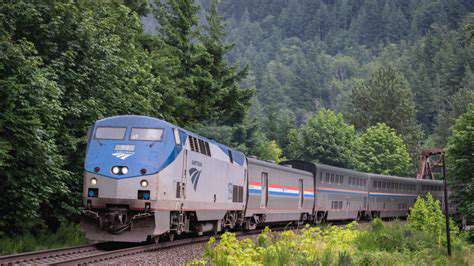
![Planning a Family Camping Trip [Beginner's Guide]](/static/images/27/2025-04/MakingtheMostofYourCampingExperience.jpg)
